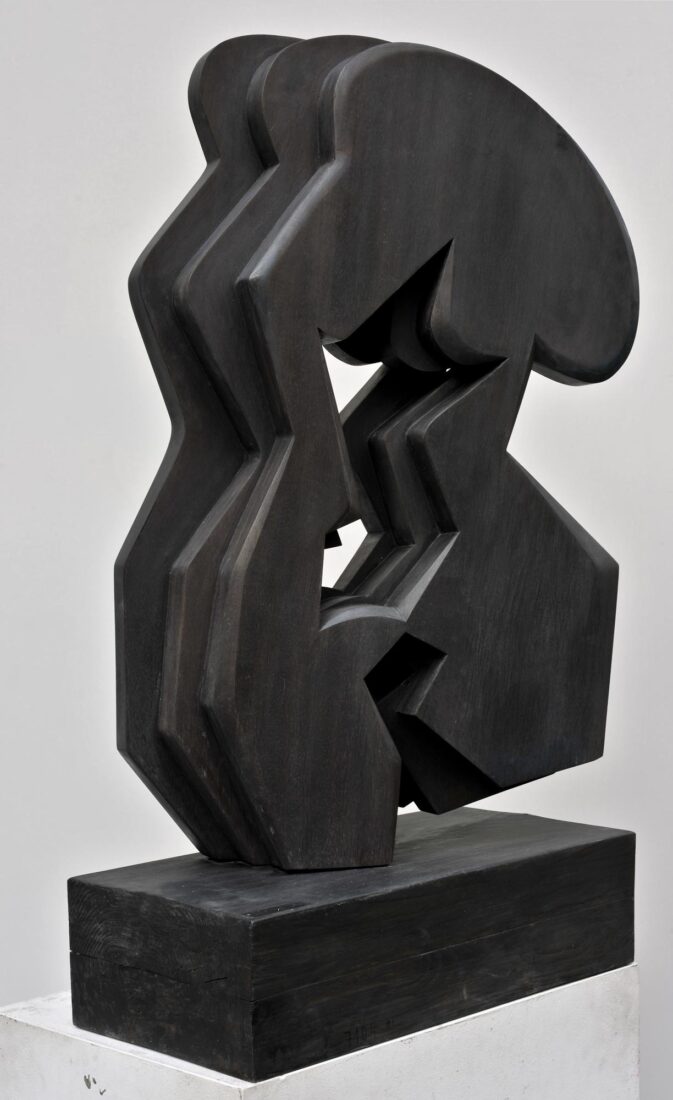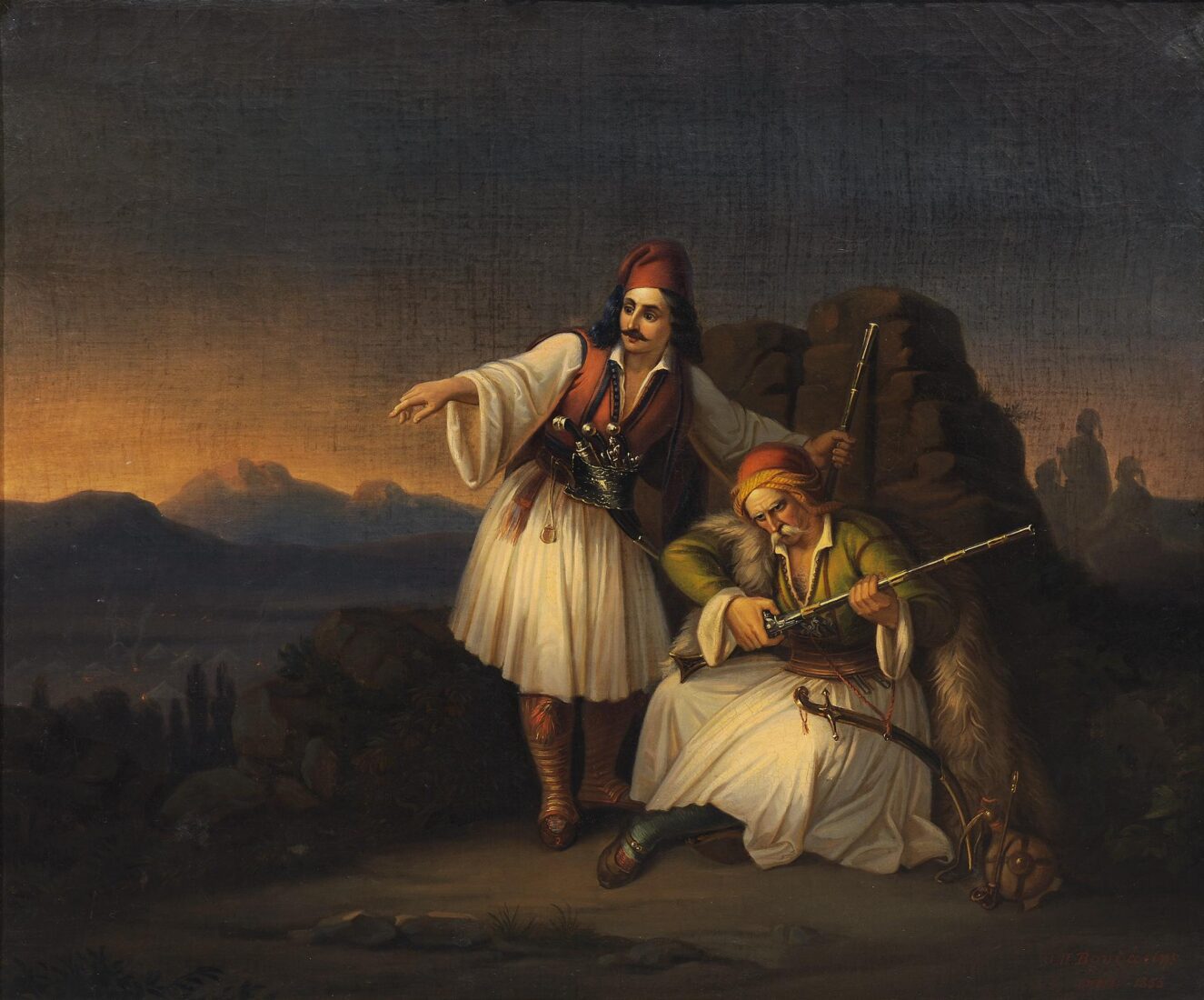

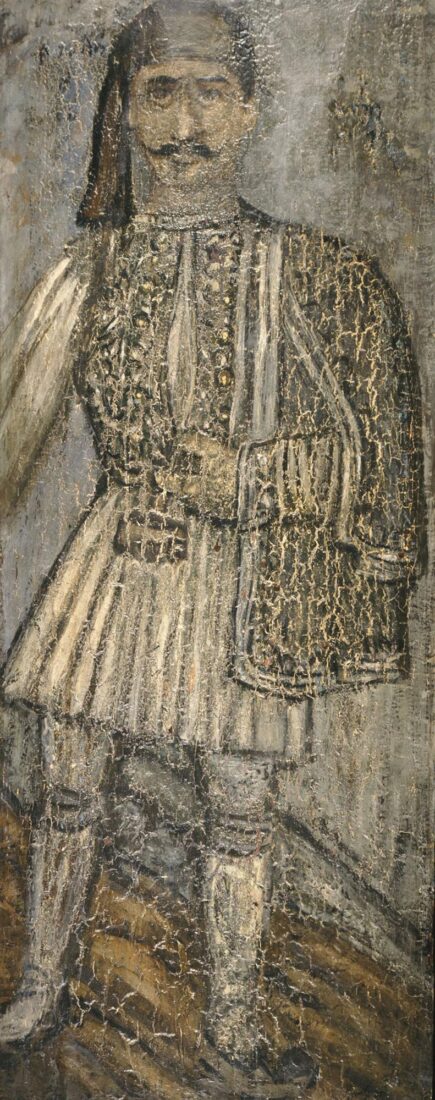
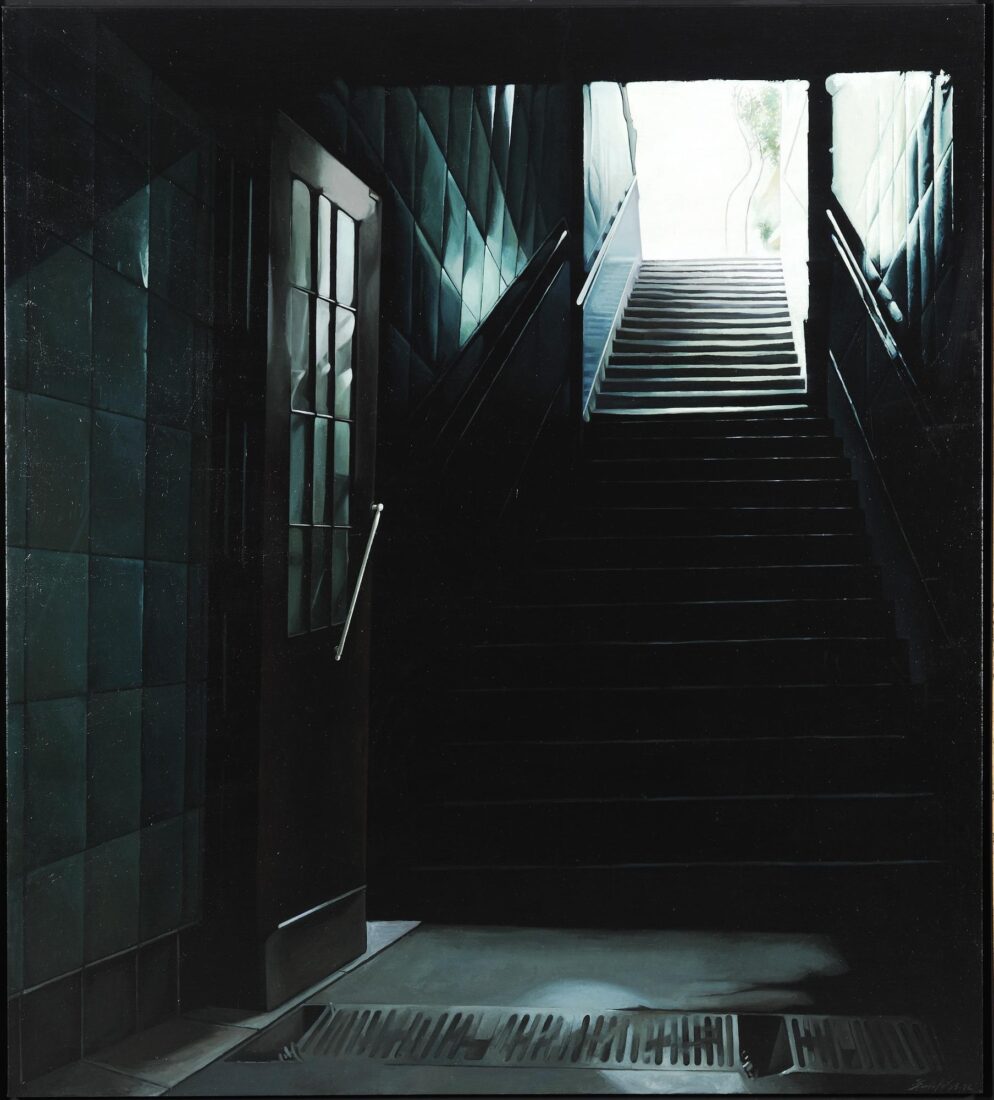
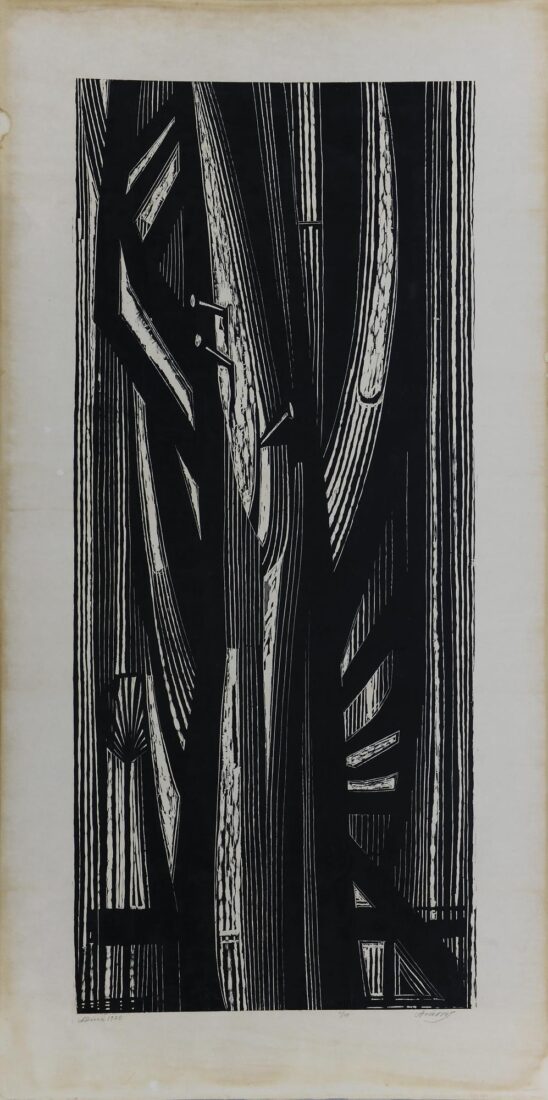
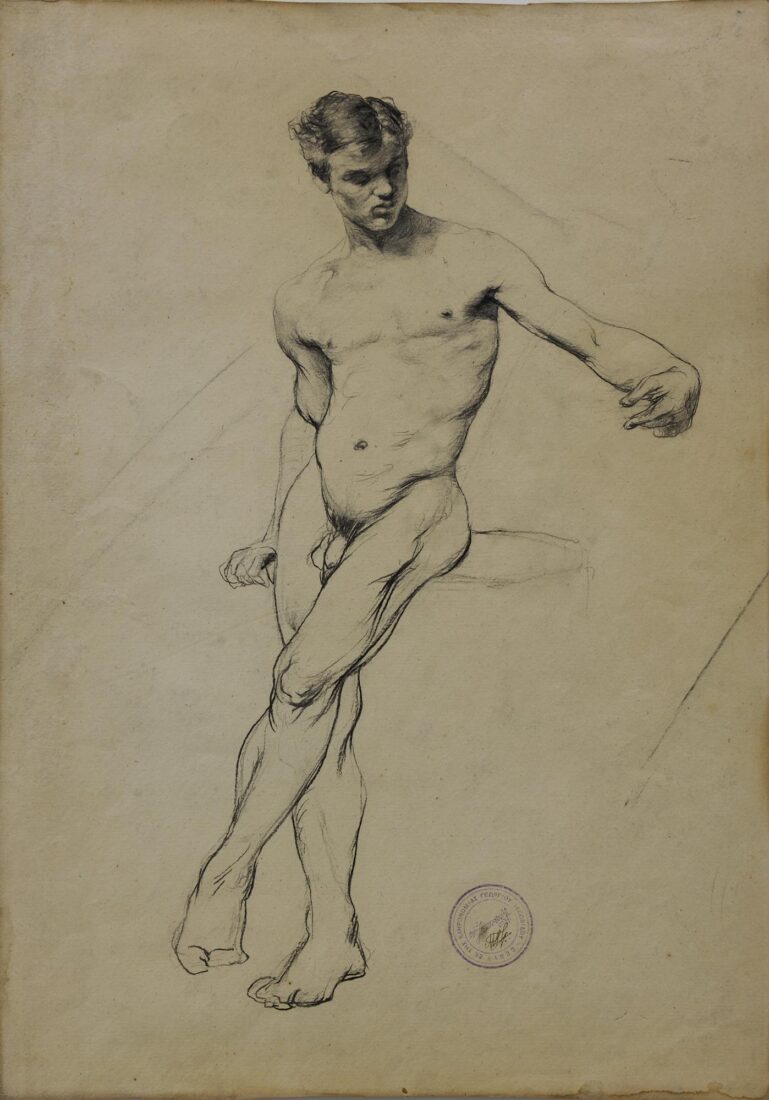
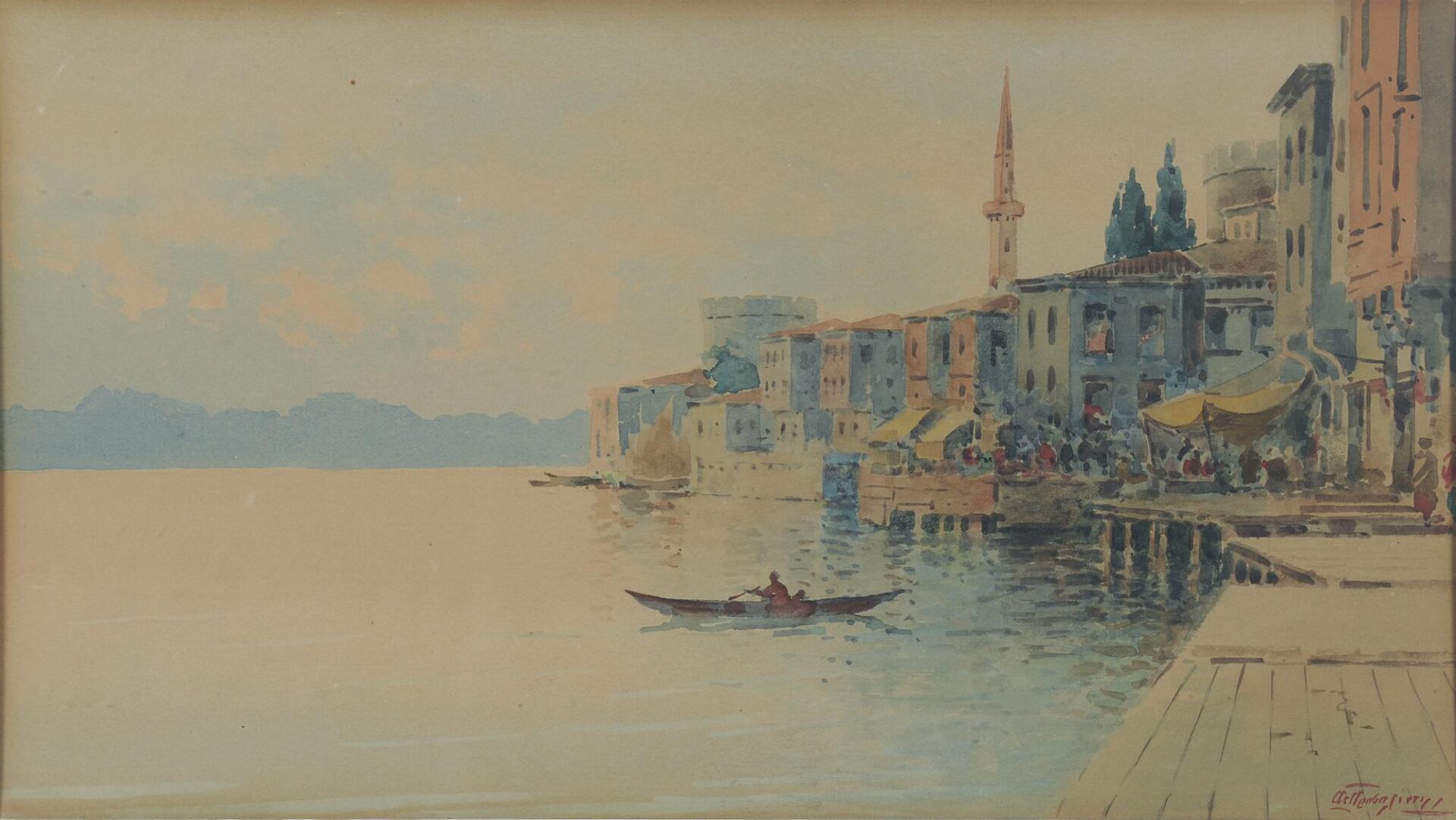
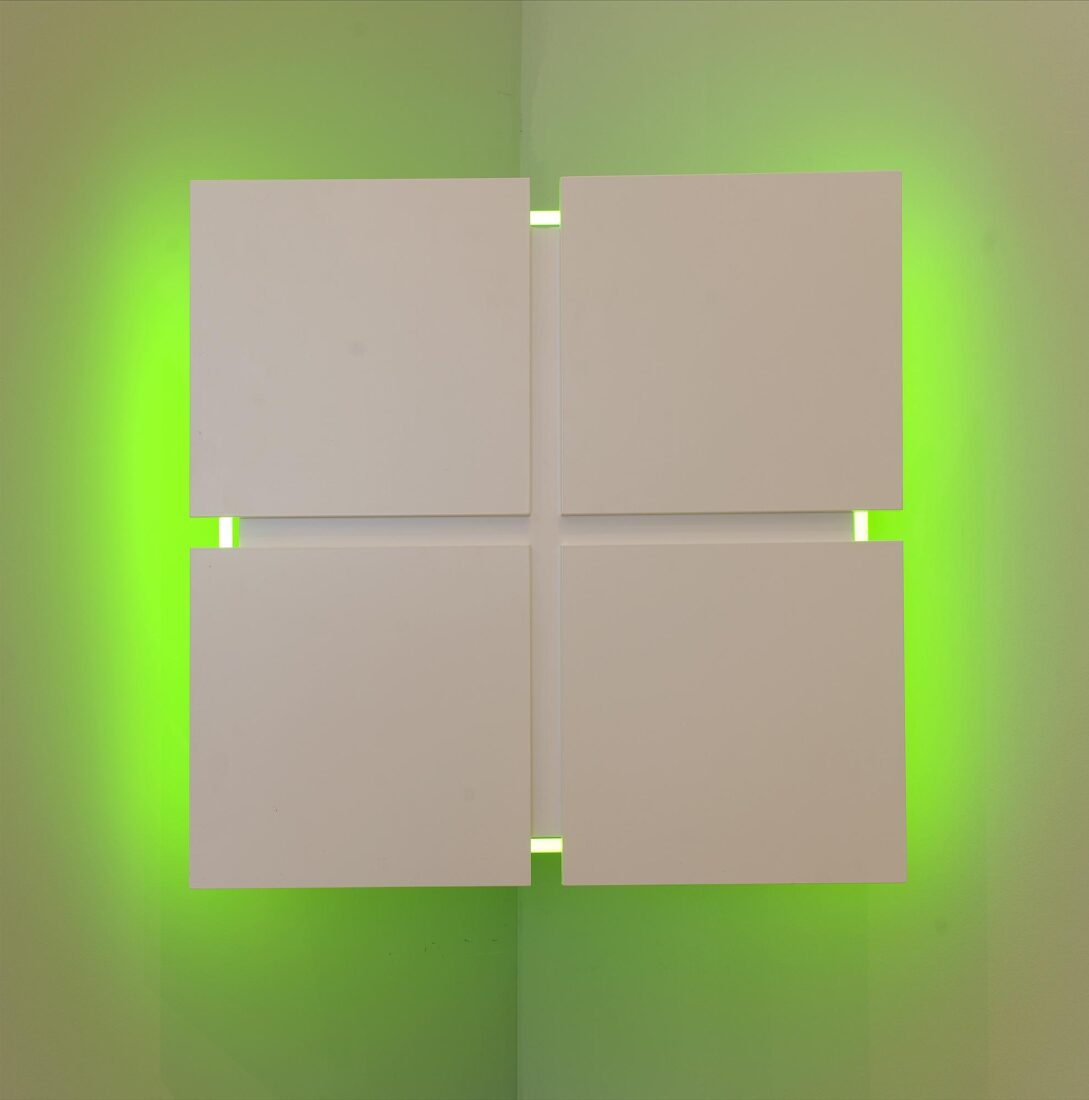
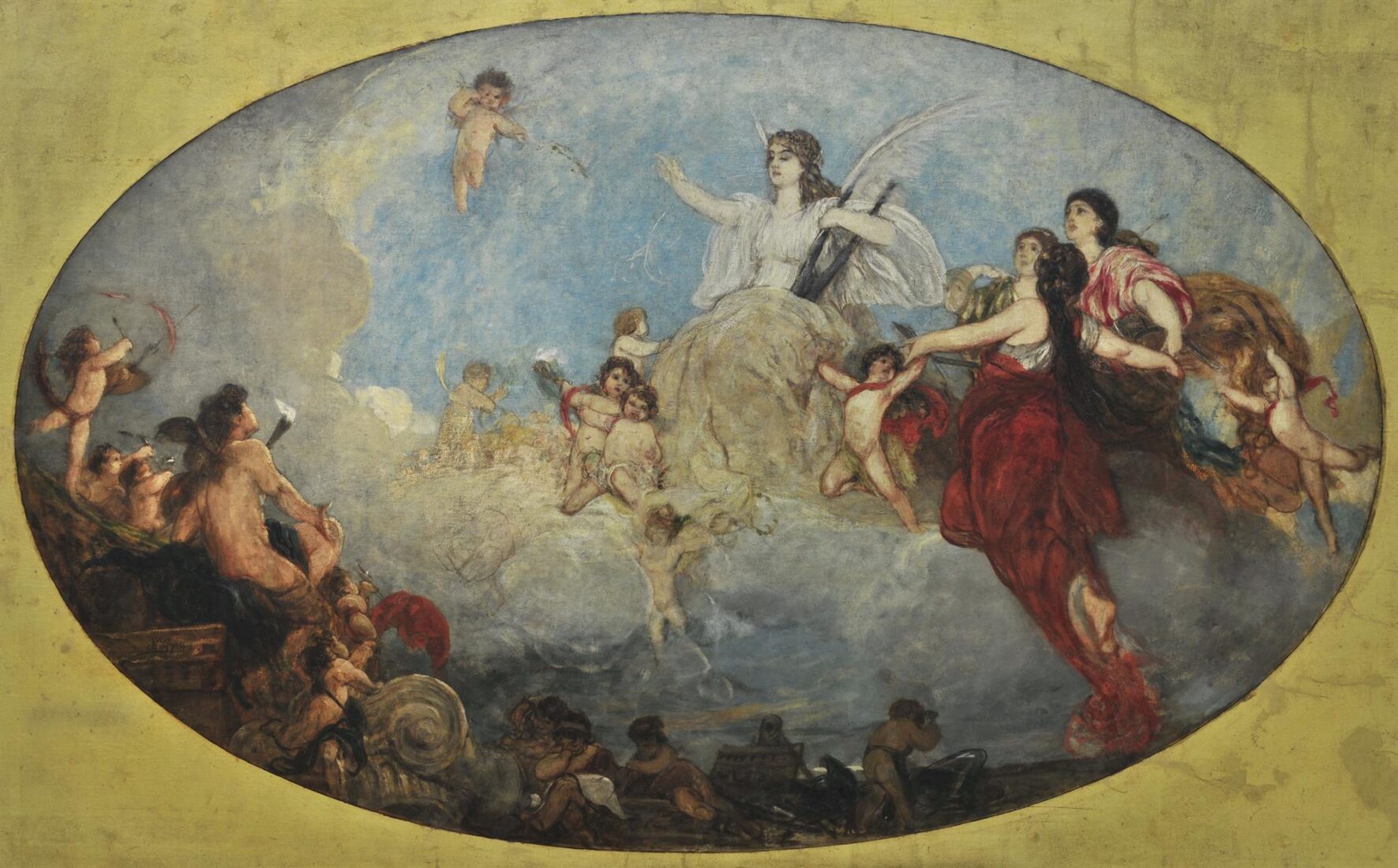
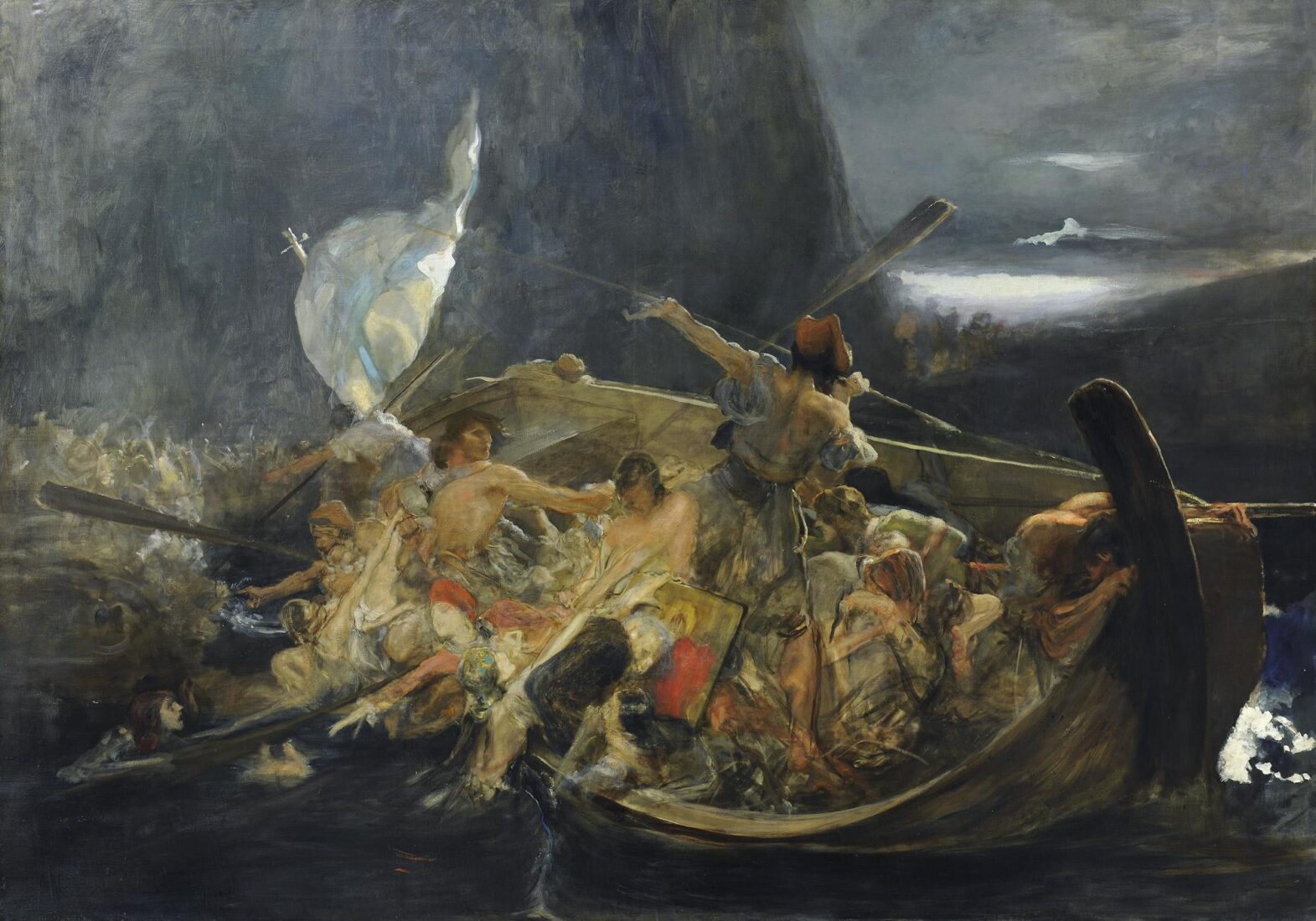
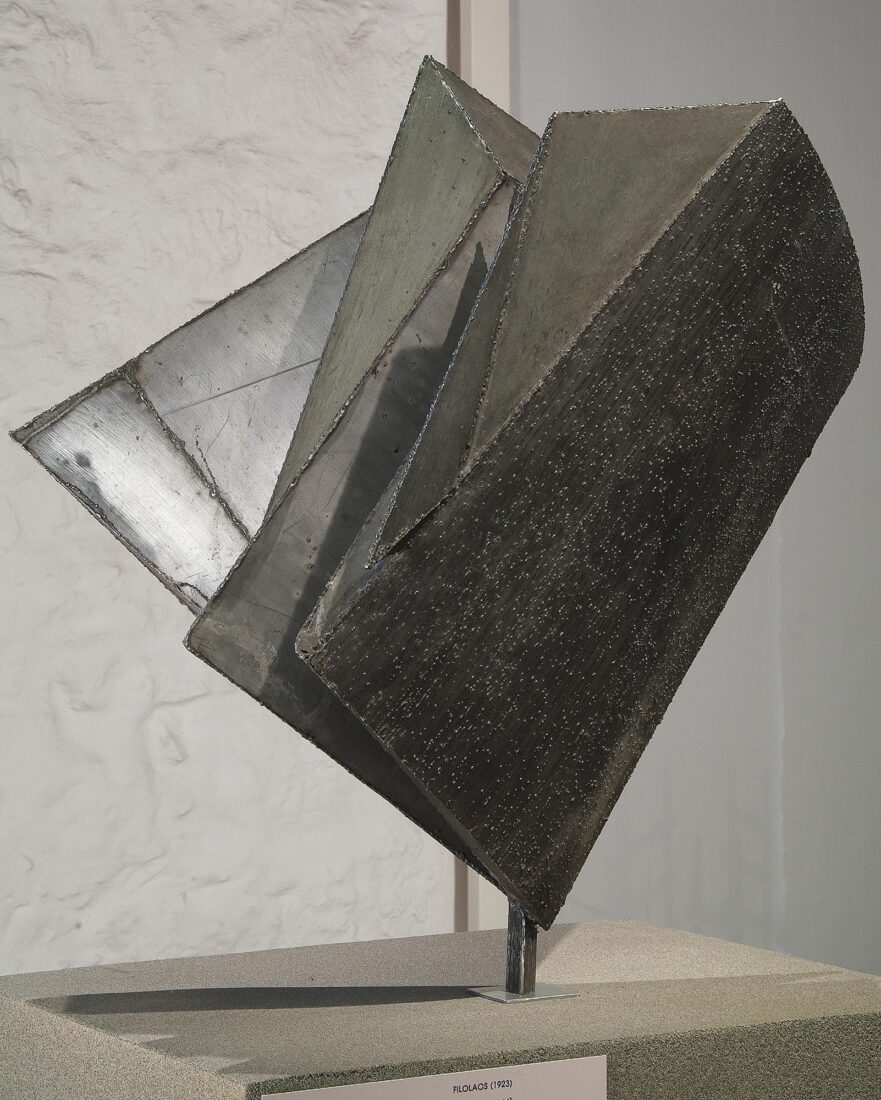
A Greek of the diaspora, Philolaos settled in Paris after the war. His liberation from the academic spirit of the Athens School of Fine Arts is obvious even in his earliest work, despite the fact he was still working in the field of representation; he soon consolidated his quests and advanced on to abstraction. The result was compositions based on geometric forms or, in certain cases, on expression by means of non-figurative shapes, in which the figurative elements are limited to a completely schematic rendition. A chance event at the end of the Fifties, when he was trying to give form to a work in iron, revealed to him a physical tendency of the material to undergo centrifugal divergence, leading him to the utilization and the combination of the diagonal with the vertical axis. Thus, using stone, wood, lead, iron and, above all, stainless steel and beton lave, he made compositions such as “The Prow”, which are balanced on vertical and inclined levels, while at the same creating the impression of a potentially revolving movement.
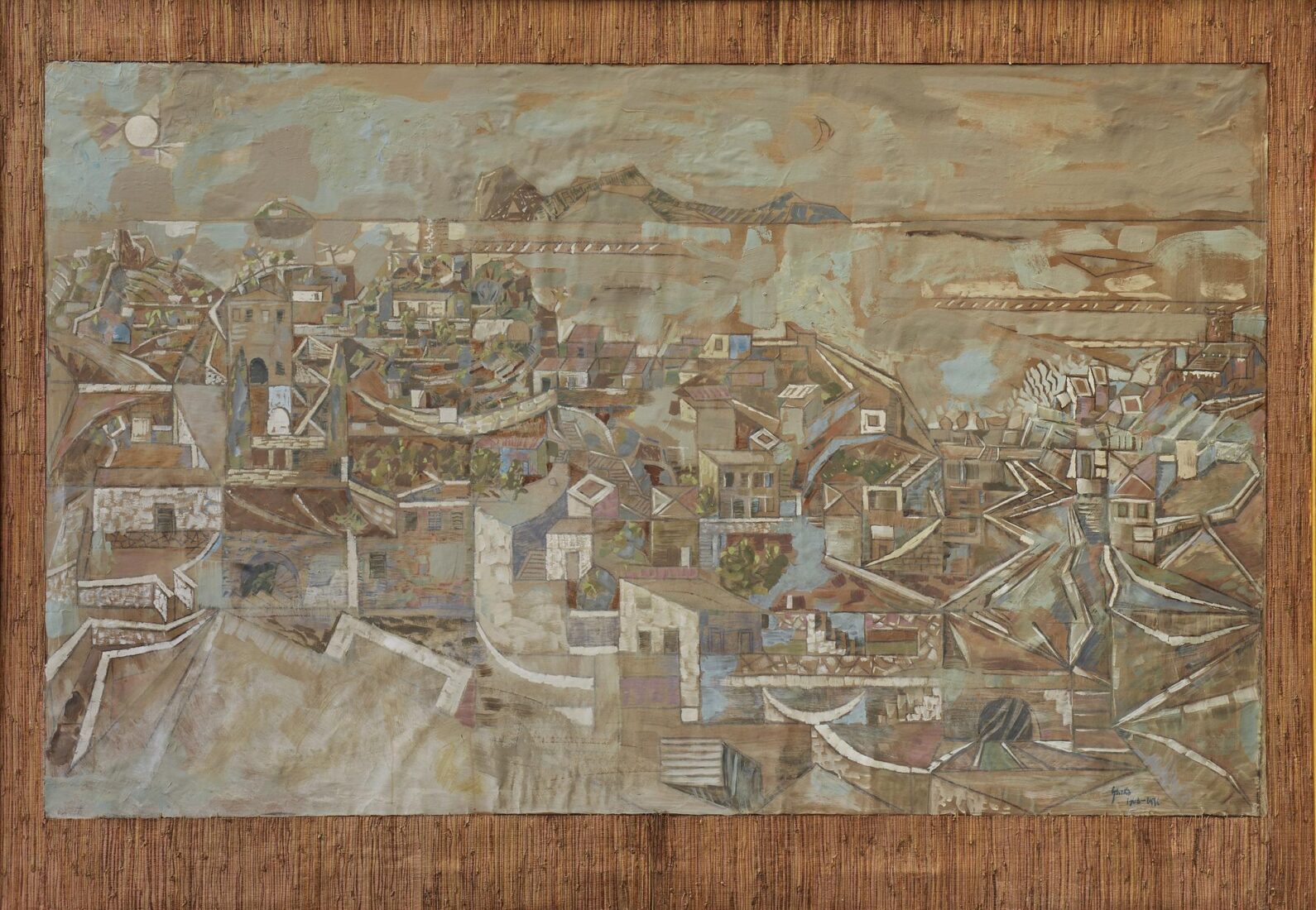

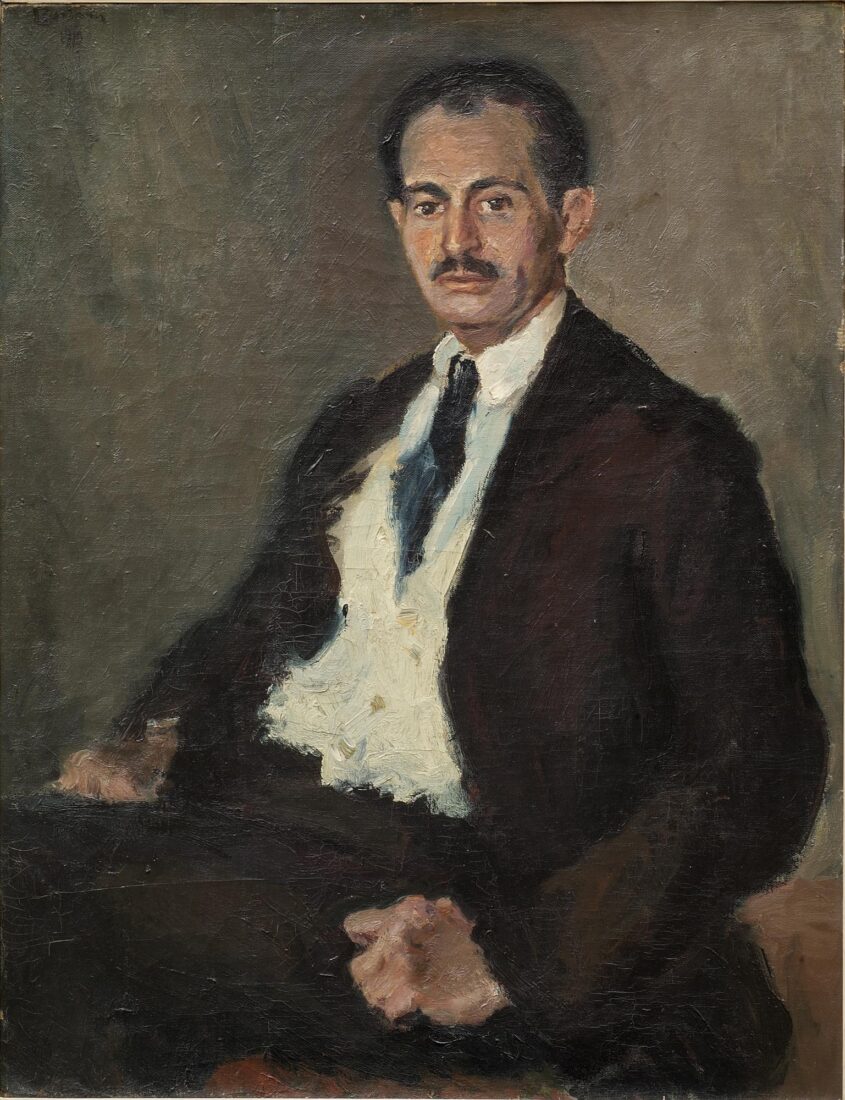
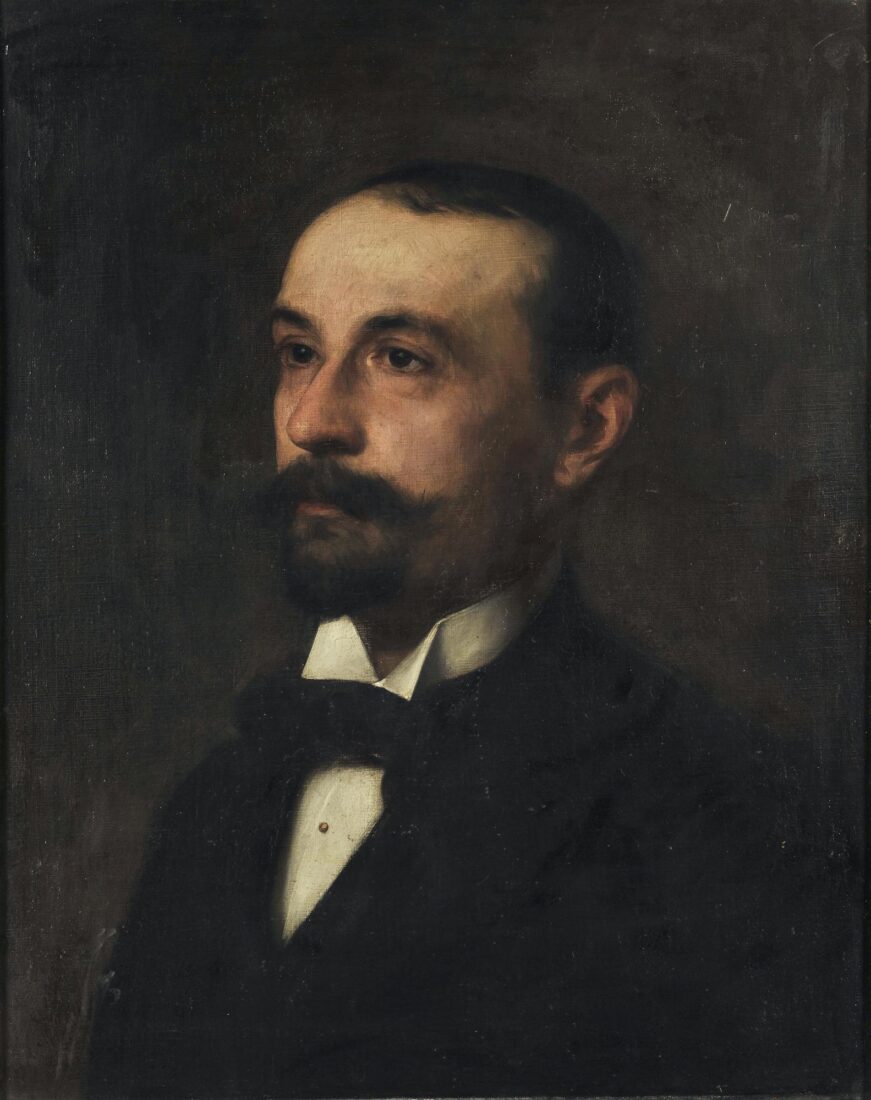
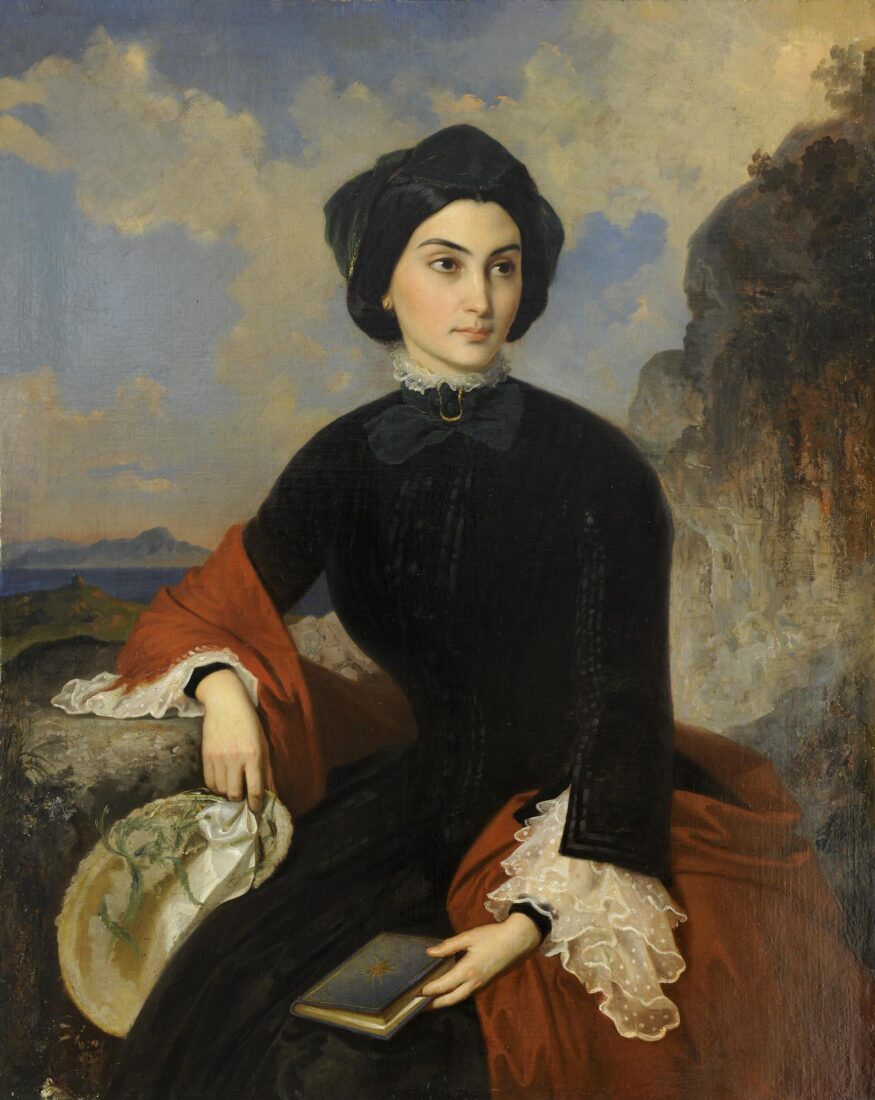
The Bavarian artist Ludwig Thiersch was one of the first professors at the School of Arts. His model here is a woman of great personality, Kleoniki Gennadiou, one of the first Greek women painters and sculptors. She is elegantly dressed, holding a book in her left hand, probably a book of poetry, a detail suggesting that she was an educated, scholarly person.
Now for the first time, the figure is placed outdoors: the rock on the right, the sea, an island in the background, the blue sky with orange clouds, all suggest Greece. With her romantic beauty and her dreamy eyes, Kleoniki Gennadiou is a representative example of how a foreign artist envisioned the ideal Greek beauty.
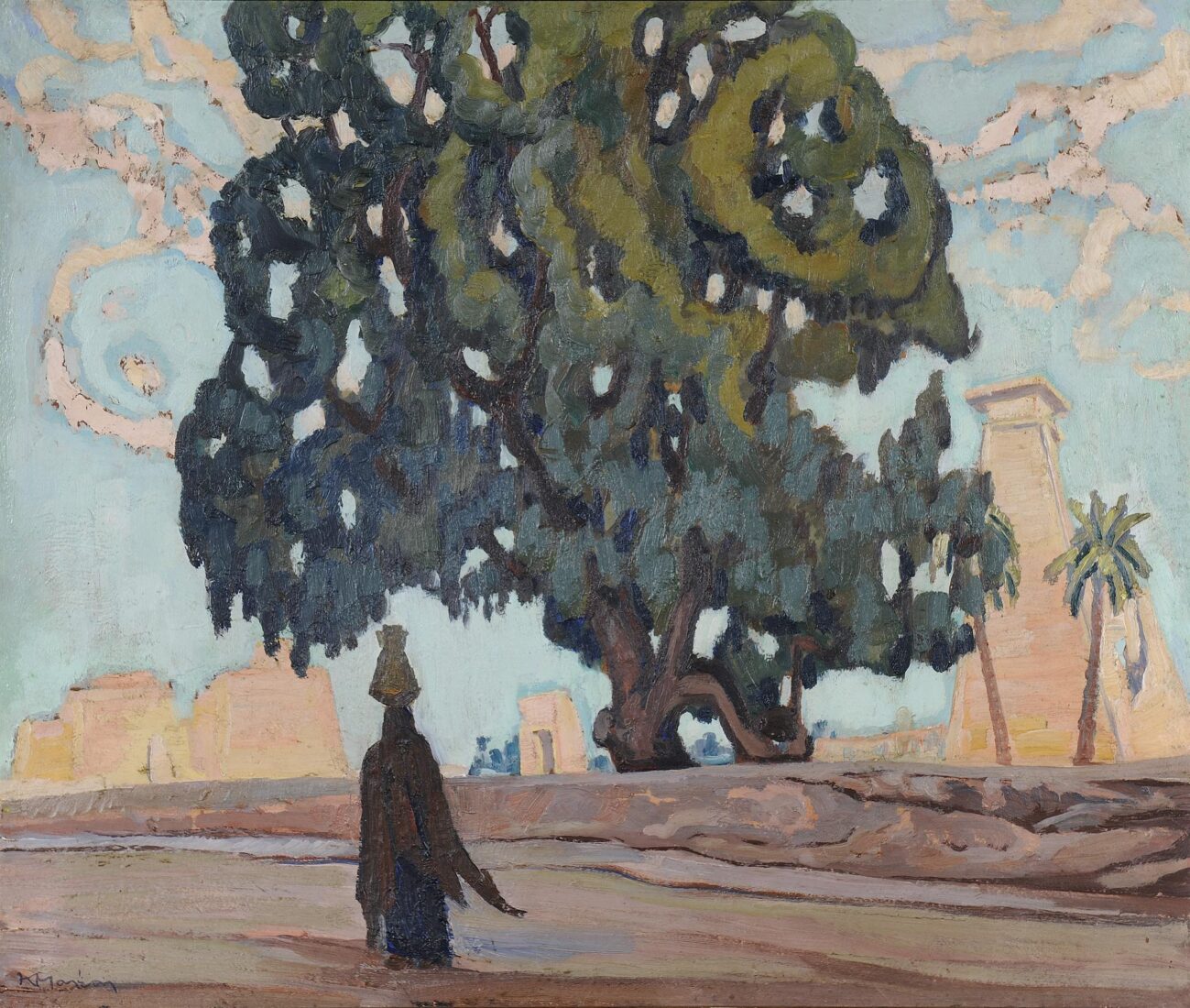

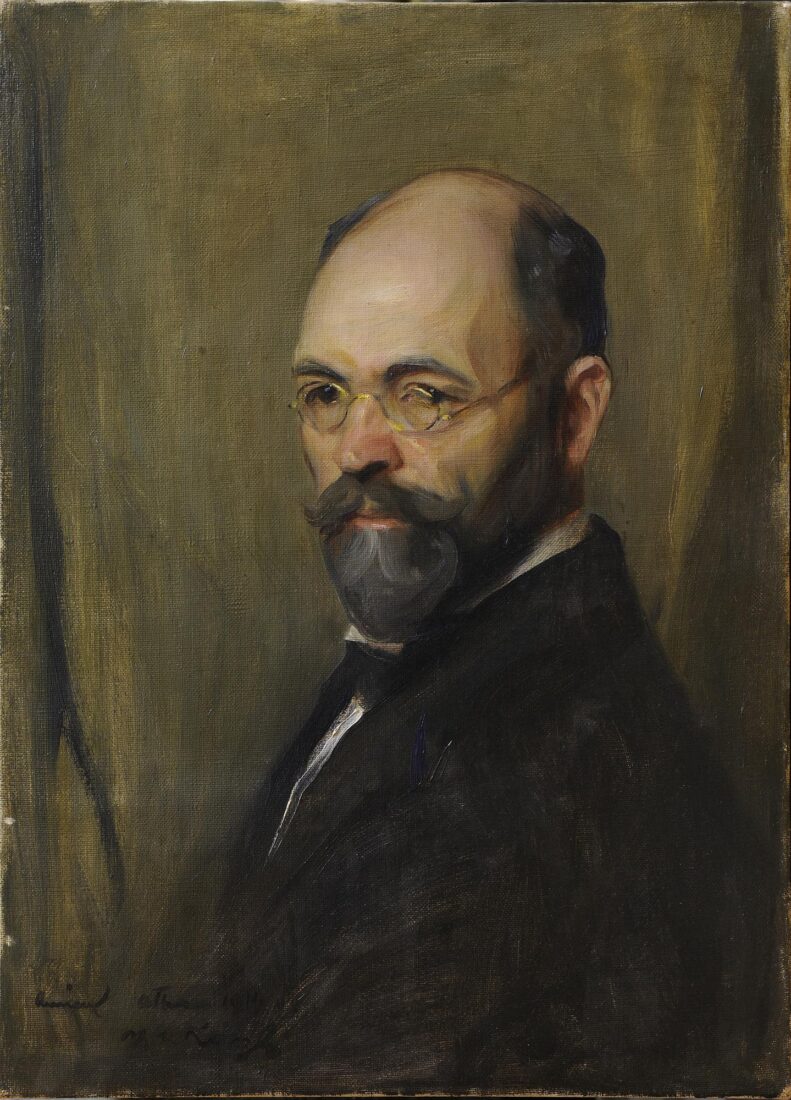
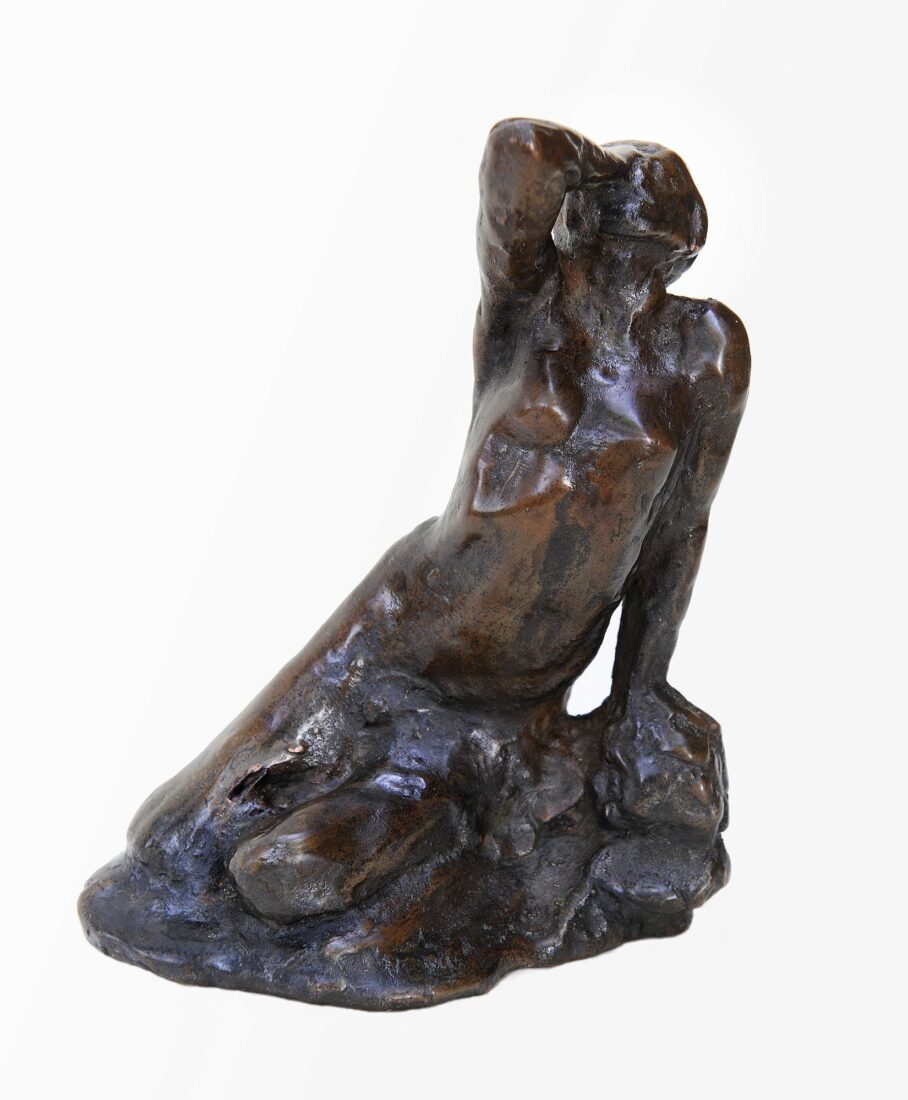
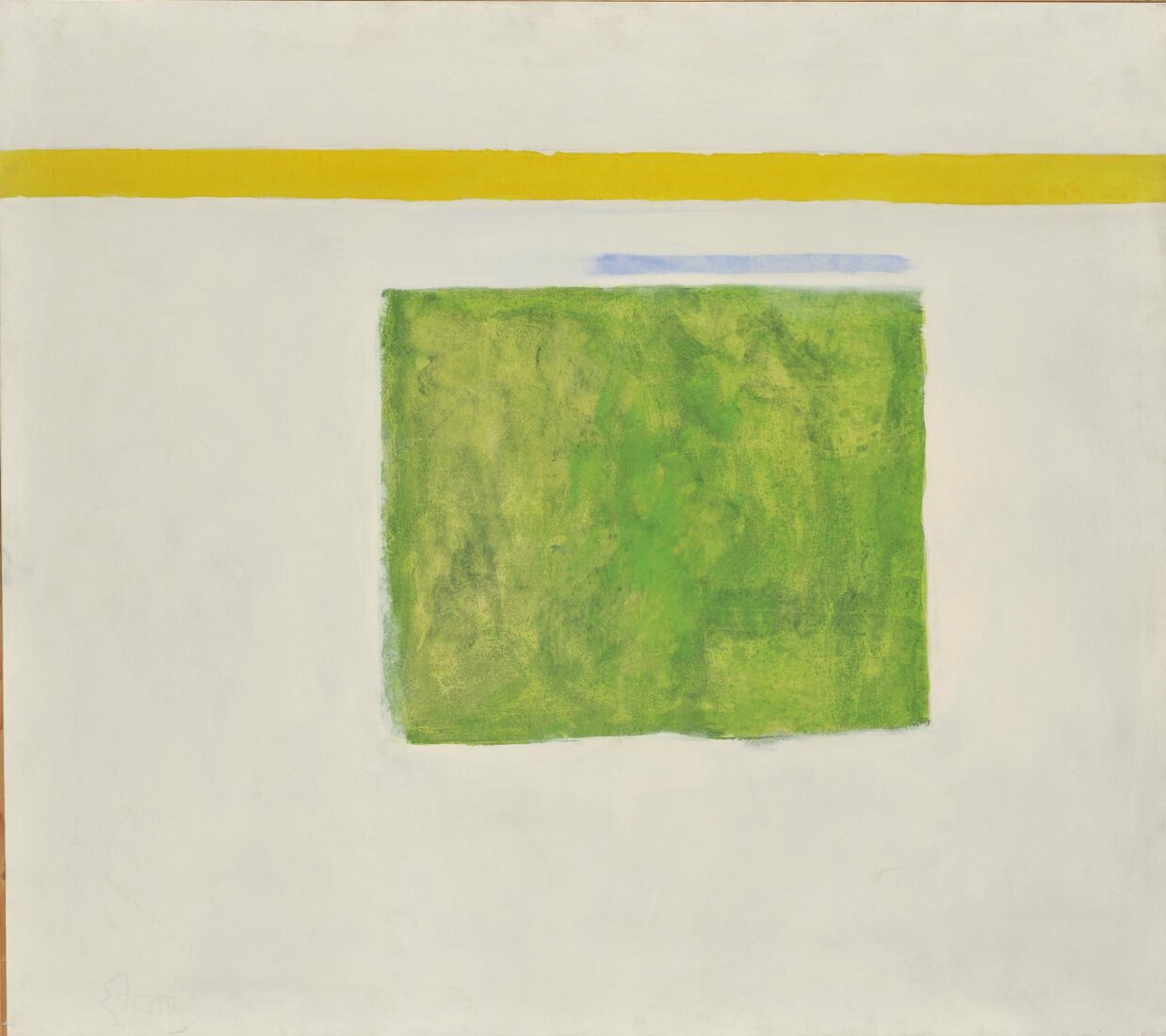
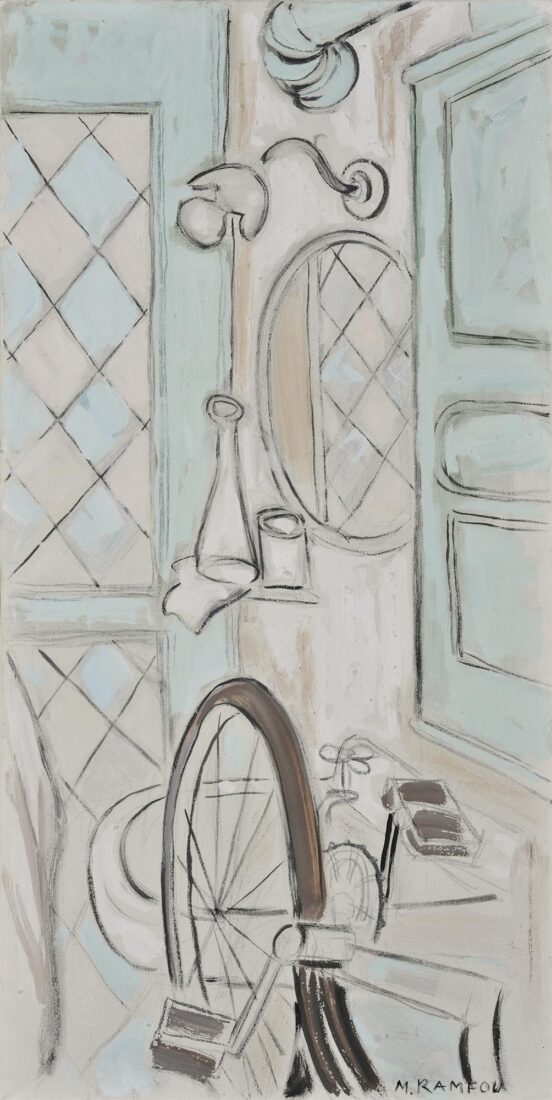
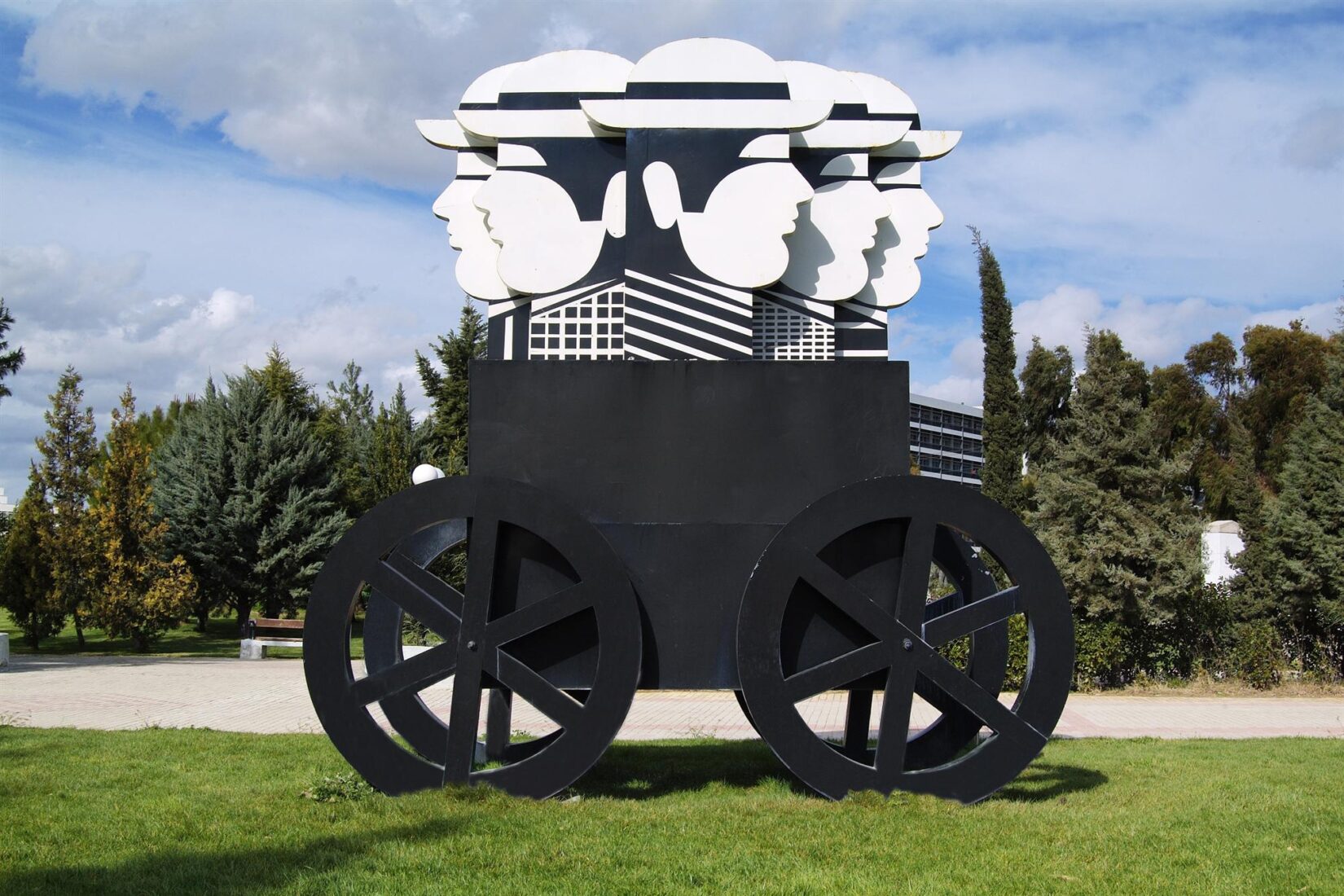
Yannis Gaitis was a restless and inventive man with a strong need to question things coupled with an innate sense of humor. These qualities characterize his art and are embodied in his signature little men.
The little man, a kind of “everyman,” appeared in Gaitis’ painting in the early sixties. He was gradually standardized, schematized and became the protagonist of his compositions, rhythmically repeated in a multitude of combinations. The little man later moved beyond the strict confines of the two-dimensional painted image. He went on to occupy three-dimensional space, decorating furniture and all sorts of everyday utilitarian objects, entered the realm of fashion, and starred in environments and happenings as a finally living human being.
“Mass Transport” is an expression of Gaitis’ critical as well as ironic view of the homogenization, encapsulation and isolation of humankind in urban centers. The double title – “Mass Transport” or “General Transport” – provokes a number of different associations.
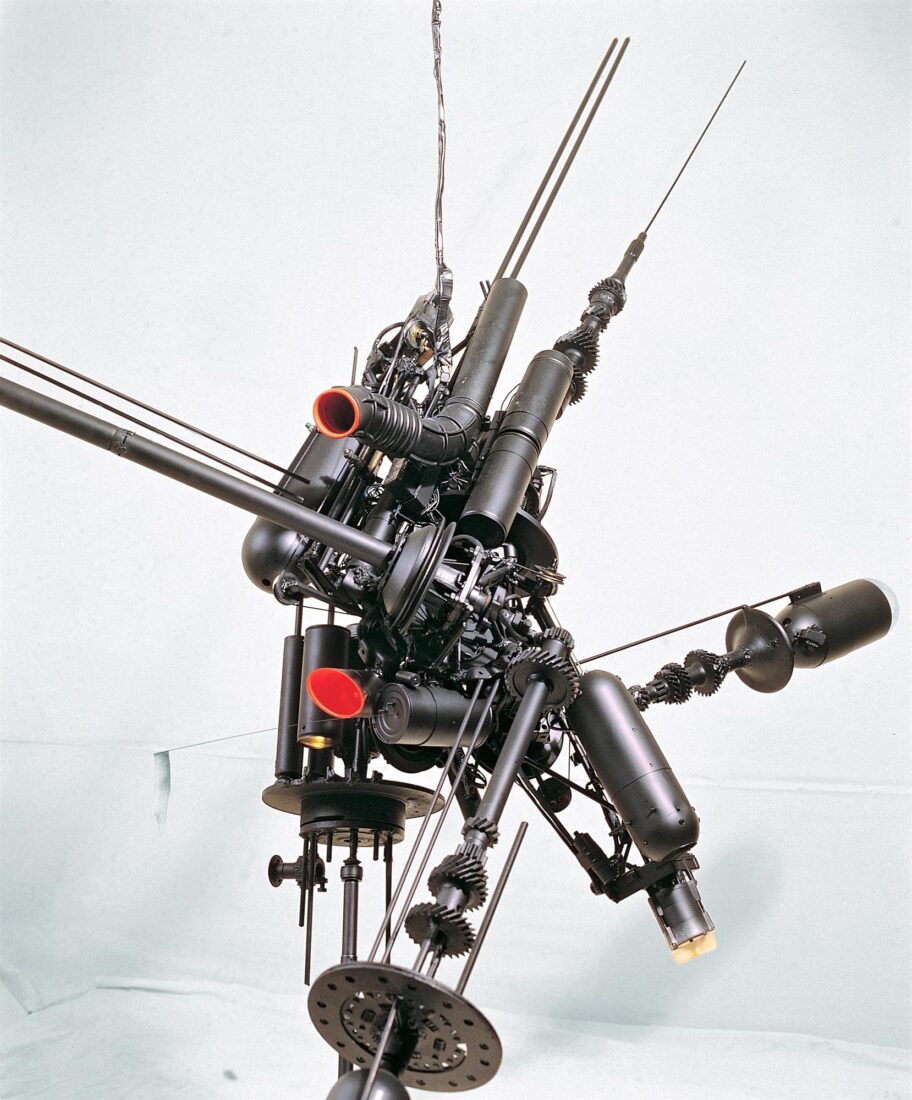
Lambros Gatis studied at the Vakalo School and worked closely for ten years with the engraver Vasso Katraki, but sculpture has always been his principal expressive means. His interest in form and the possibility of the transformation and extension of it through space by means of motion manifested itself at the beginning of the Eighties when he began to create metal constructions assembled from various useless objects and machine parts. These constructions, hanging suspended or on the ground, made with imagination and inventiveness, resemble robots, imaginary beings or peculiar weapons and impose themselves on space by means of mechanical motion and lighting.
“SBBR G” is a hanging electrically-driven construction whose parts turn in various directions, transmit small bursts of light and at the same time emit a strange sound, which might be the sound made by some unknown weapon.
